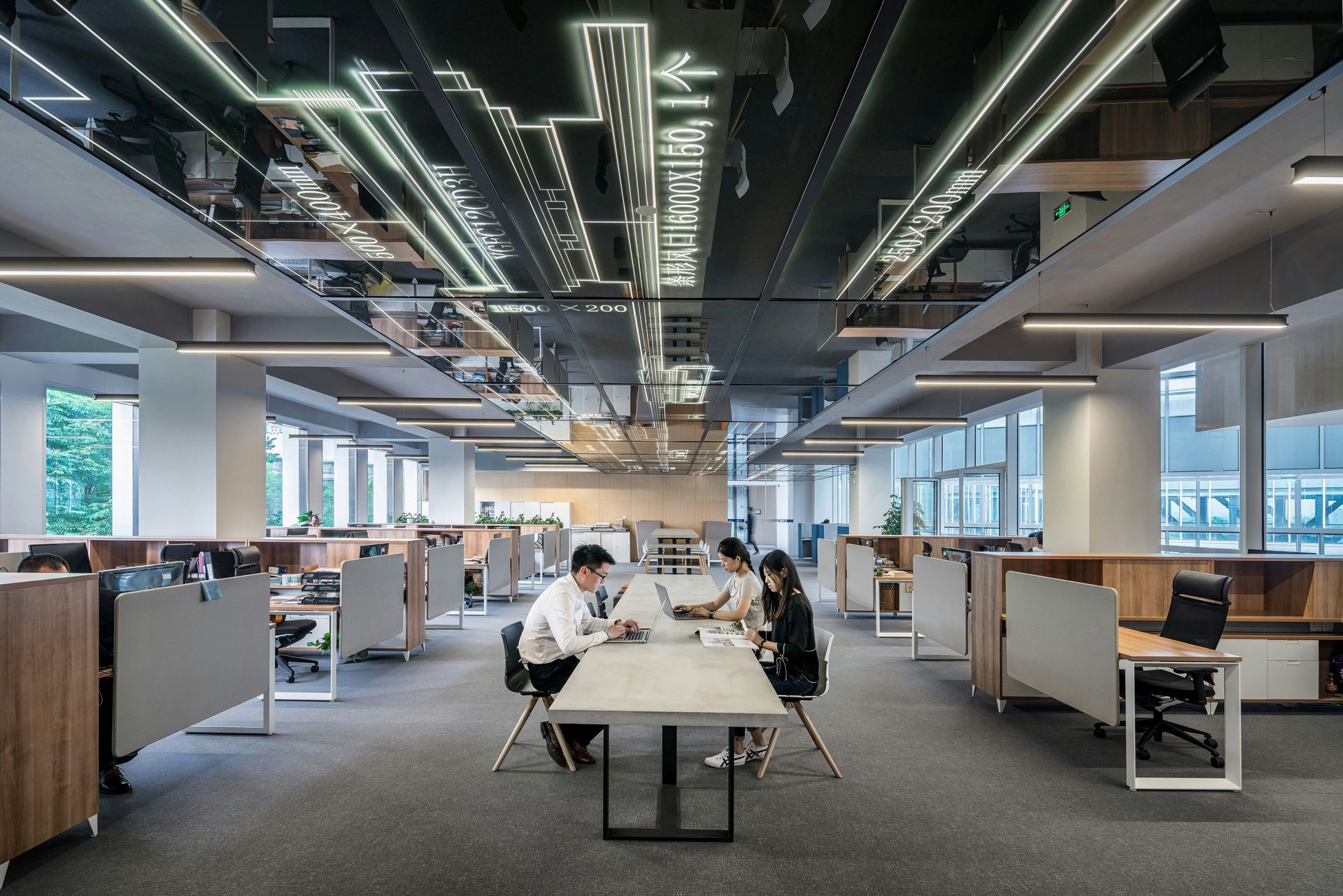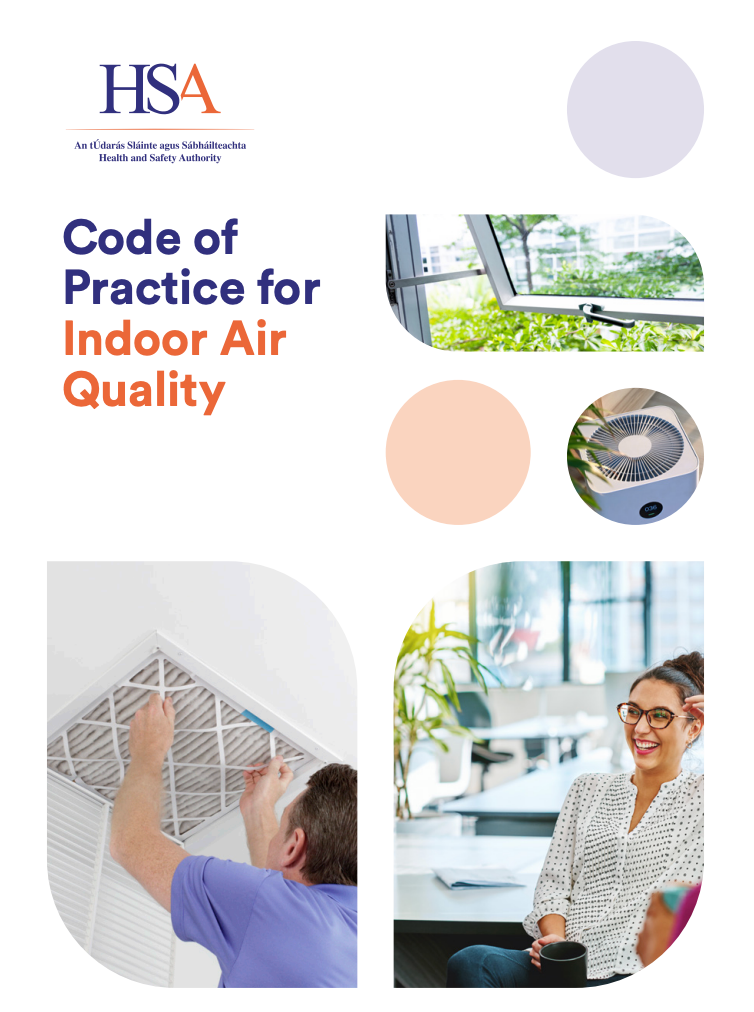Ensuring an enclosed workplace is well-ventilated with sufficient purified air is an essential responsibility employers must take seriously. Not only is doing so a regulation of the Workplace Health, Safety, and Welfare Regulations, but it’s also in an employer’s best interest to facilitate a healthier working environment and a healthier building for all employees.
This article will examine why ventilation is crucial, how it affects employees, and the benefits of implementing a ventilation action plan. By exploring the benefits of optimal workplace ventilation, companies can incorporate practical methods for achieving an environment where employees can flourish and perform to the best of their abilities.
Why is Ventilation so Important?
An enclosed workplace can maintain indoor air quality and provide employees with safer working conditions by constantly flowing fresh air. As mandated by Regulation 6, Ventilating can positively impact health by reducing airborne pollutants, microbes, dust particles, and allergens. Better air quality has a holistic effect on employee health, lessening the risk of respiratory infections and asthmatic reactions by filtering out harmful particulates.
Simply put, ventilation can reduce potential sicknesses and minimise the exacerbation of respiratory health issues. The Health and Safety Executive (HSE) states that proper ventilation can lead to better concentration, increased environmental satisfaction, lower absences and improved sleep disorders.
How to Ventilate an Enclosed Workplace?
Strategically placing windows and doors, although it requires meticulous planning so as not to expose employees to cold draughts, can provide a natural and consistent flow of fresh air. Whilst this method is cost-effective and somewhat easy to implement, workplace interior layouts may need to be adjusted accordingly.
The second method is through HVAC (Heating, Ventilation and Air Conditioning), commonly called mechanical ventilation. This involves installing air conditioning systems or extractors and is more costly than natural ventilation. While this method requires higher initial investment and regular maintenance, it’s a much more effective means of providing a healthier working environment for employees.
Air purifiers with HEPA technology filters can remove 99.7% of the airborne particulate matter circulating in your workplace. Removing these pollutants can lead to several immediate and long-term health benefits, such as better sleep quality, improved health and increased life expectancy.
The HSE provides an informative video on the basics of providing a fresh and consistent airflow to the workplace.
What are the Benefits of Good Ventilation
More than just a regulatory requirement, ventilation ensures employees can work productively in suitable conditions. Employers who understand the benefits of proper ventilation can create a working environment conducive to their business.
Here are some integral benefits of a well-ventilated workplace:
Improving Air Quality
By removing harmful particulates from the air, especially in working environments where employees are exposed to dust, chemicals and microbes, ventilation systems can aptly lessen respiratory issues and spreadable illnesses, decreasing sickness.
Certain pollutants, such as pollen and dust, can agitate allergies and cause discomfort. If this occurs, employees will likely lose focus on tasks.
Employee Productivity
Poor ventilation adversely affects health, well-being and the ability to concentrate. However, studies have shown that when ventilation is optimised, the opposite is true. Better air quality enhances cognitive functions by upping oxygen levels in an enclosed space. An environment free from stagnant, stuffy air provides the brain with enough oxygen to function with finer competency.
Employees with access to a purified airflow are highly functional, sharper, and far more productive. They focus better on their jobs and are more satisfied overall.
Reduce Illnesses, Reduce Absences
Poor indoor air quality is often the silent cause of various health issues, including common colds, migraines, and fatigue. It can be held accountable for a considerable percentage of employee sick days.
Employers who focus on ensuring their workplace provides good ventilation can reduce health-related absences and facilitate an environment where employees’ well-being is prioritised.
Improving Your Employees’ Health
Without constant fresh airflow, an enclosed working environment can become stagnant and stifled, especially in hotter months. This stagnancy, worsened by body heat and physical activity, can reduce overall comfortability and affect employee performance.
A well-actioned ventilation system, whether mechanical, natural, or both, moves air to cool it down, helping to establish better working conditions by maintaining a comfortable temperature.
Health risks such as mould are common concerns in enclosed, poorly ventilated workplaces. Mould not only has an adverse effect on health, but left untreated, it can damage high-value equipment and eat away at a building’s structure. Good airflow controls humidity levels and works as an effective mould prevention measure by keeping mould from forming and spreading.
By removing airborne pollutants, pathogens and allergens, ventilation can improve air quality to help individuals feel more comfortable in their working environment. Employees who are satisfied with their environment are likelier to perform better and take fewer sick days.
Investing in a ventilation system can lead to significant long-term benefits for employees and employers.
Why Use a Heat Recovery Ventilation System (HRVS)?
Although double glazing and better insulation can improve energy efficiency, HRVS offers an added benefit when ventilating a workplace. By creating a self-contained environment, these superior ventilation systems provide a constant flow of warm, fresh air, which is especially advantageous during winter when opening a window can result in significant heat loss.
A heat recovery system provides an ample supply of cleaner, healthier, and warmer air while helping to reduce energy costs. These systems also minimise condensation and humidity, both of which can cause health issues if left untreated.
Symptoms such as headaches, brain fog, illnesses, and sleep disorders are clear indicators of a poorly ventilated workplace. Installing an HRVS can enhance air quality, promote a healthier environment, and lower the risk of illness by removing irritants.
Compliace with Health & Safety
Employers have a duty of care to their employees, and providing a clean, safe environment is a prerequisite for ensuring a workplace meets or exceeds regulatory expectations. By recognising the impact of good ventilation on employees’ well-being, businesses can assess their workplace and identify key areas needing improvement.
Under health and safety law, employers must abide by and understand Regulation 6 of the Workplace Health, Safety, and Welfare Regulations, which includes providing fresh air to the workplace through apt ventilation.
Conclusion
Businesses should understand the importance of a healthier workplace and take the correct measures to ensure their employees work in environments that facilitate health and safety. The benefits of a well-ventilated workplace are numerous, and implementing functional ventilation methods will foster a workplace where employees can flourish healthily, perform at their best and mitigate any discomfort regardless of the seasonal weather.
At Ultra Protect, we take pride in knowing the ins and outs of air quality and have put considerable effort into ensuring you do, too. Investing in proper ventilation is not only a regulation but also a worthwhile investment that is sure to benefit your team in the long run.
With Ultra Protect’s assistance, office-based businesses have seen a 32.7% reduction in employee sickness and a 53% increase in productivity. Book commercial ventilation services today and provide the healthy working environment your employees deserve.







